If you have ever wanted to learn how to make tahini, now is your chance. It is incredibly easy to prepare involving just two ingredients, sesame seeds and olive oil.
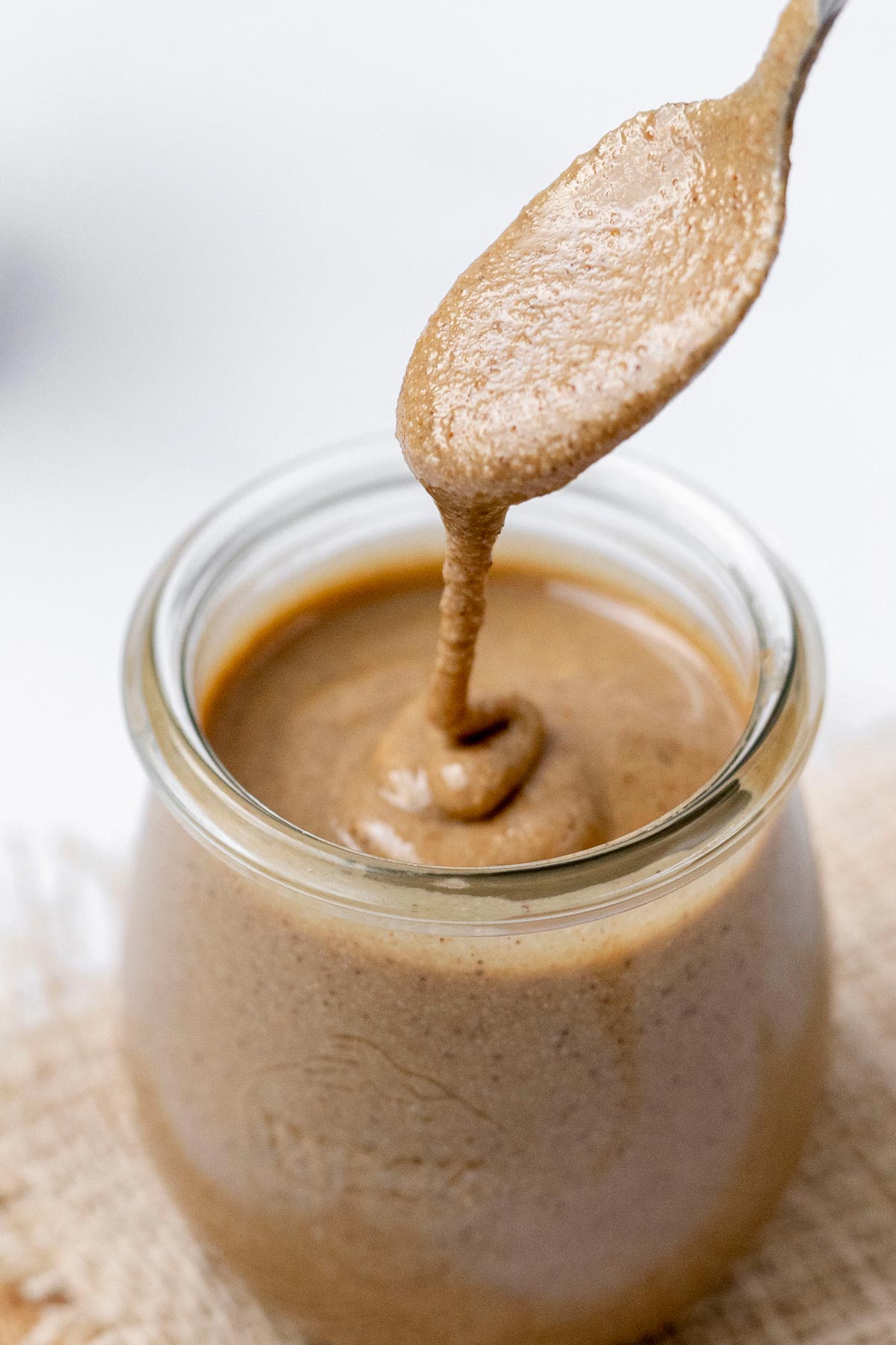
What is Tahini?
Tahini is a sesame seed paste utilized in Middle Eastern and North African cuisines. The mixture is made of just sesame seeds and oil that you blend into a smooth paste. Some processes of making tahini also involve soaking the ground seeds in water prior to grinding, but this isn't necessary.
I like to use unhulled sesame seeds because that is usually what I have. They also happen to be more nutritious and less susceptible to rancidity than hulled sesame seeds. The only downfall to using them is that they make a darker, less smooth tahini. Whenever I prepare tahini, I whip up only as much as I am likely to use up within the next month to avoid the risk of spoilage. You can also make this recipe with the hulled type of sesame seed. It will toast quicker, and be lighter in colour.

How to Make Tahini
To start making your tahini, you want to toast the sesame seeds in a dry skillet set over low heat. You will be looking for a slightly golden colour and toasted fragrance to the sesame seeds. The total time for this should only take 10 minutes or so. Be sure to keep shaking the pan to promote even toasting and prevent burning.
Once toasted, the sesame seeds can go in a food processor with 2 tablespoons of the oil. The 2 tablespoons of oil should be enough oil to help create a smooth sesame paste, but if desired, you can add more to achieve a thinner consistency. Simply blend with the food processor until the mixture is smooth. You may want to scrape down the sides of the food processor bowl with a rubber spatula to ensure you get all the seeds that haven't been blended yet.
I use extra-virgin olive oil, but you can also substitute another type. Canola, avocado, sesame oil (untoasted), or grape seed oil are common too.
You can store the tahini sesame paste in an airtight container in the fridge for 1 to 2 months for the freshest flavour. This tahini recipe is a small enough batch that you should be able to use it sufficiently within that time.
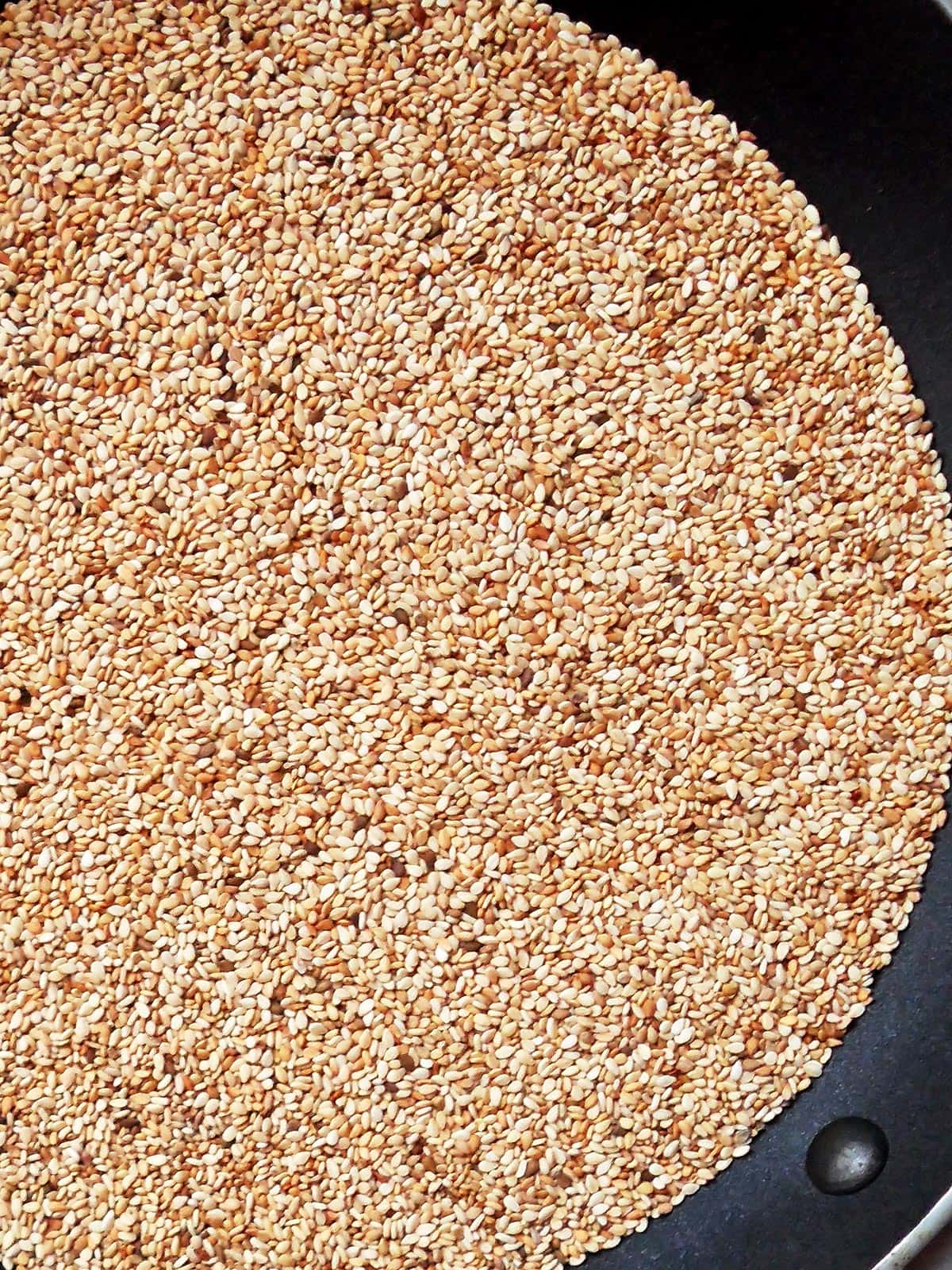
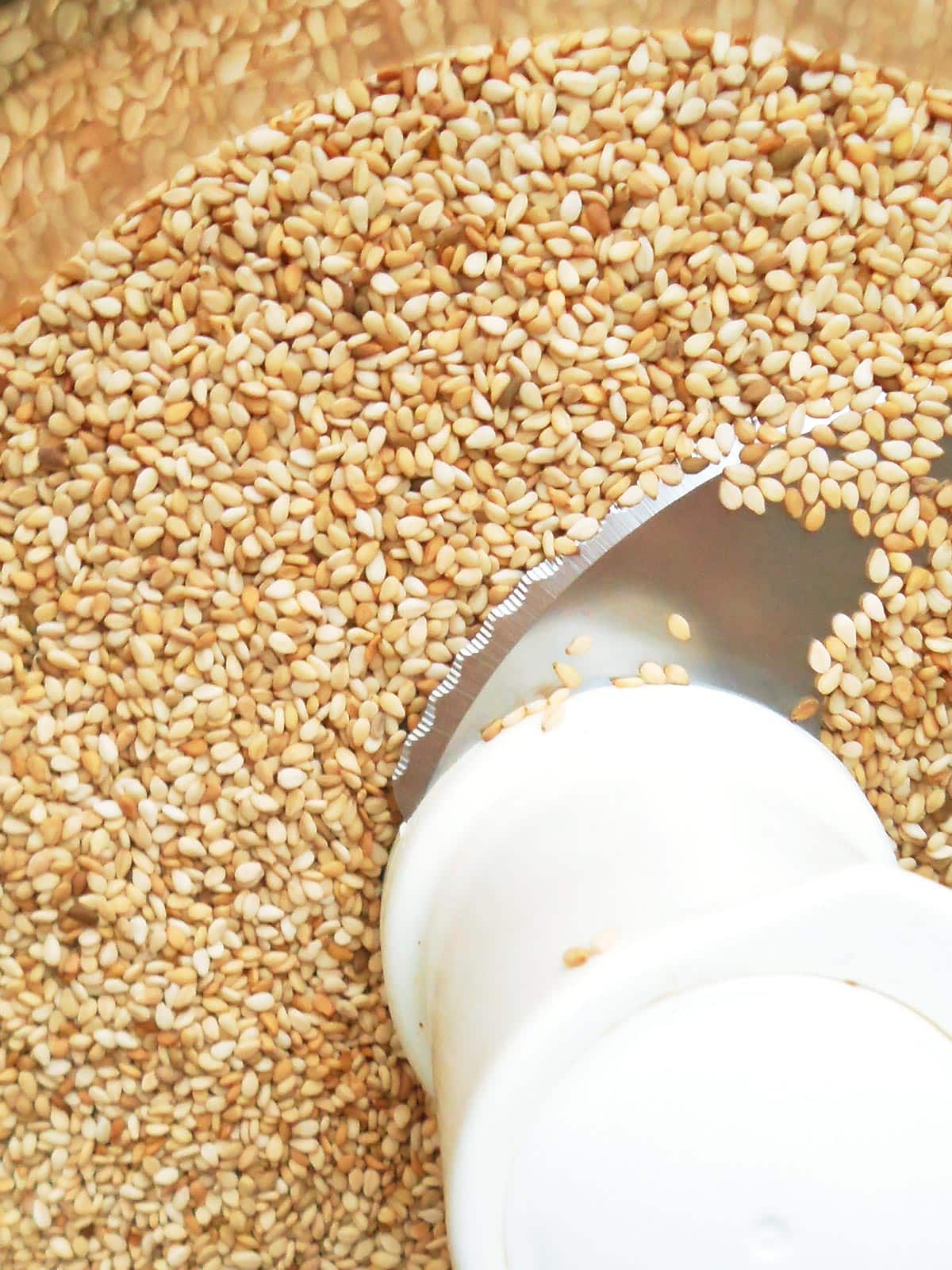
Should I Use Hulled or Unhulled Sesame Seeds in Tahini?
You can use either one you have on hand, but there are some advantages to each. Sesame seeds have a natural coating that is called the husk. As a result, unhulled sesame seeds still have the outer shell and are brown in colour. Meanwhile, hulled sesame seeds don't have the exterior coating and are white in colour.
Using white sesame seeds will give you a smoother tahini paste that is light in colour. On the other hand, unhulled sesame seeds will give you a slightly more grainy tahini with a brown colour. This isn't necessarily a bad thing if you like a little more texture. Flavor-wise white sesame seeds have a slightly more delicate taste while brown ones have a more nutty flavor.
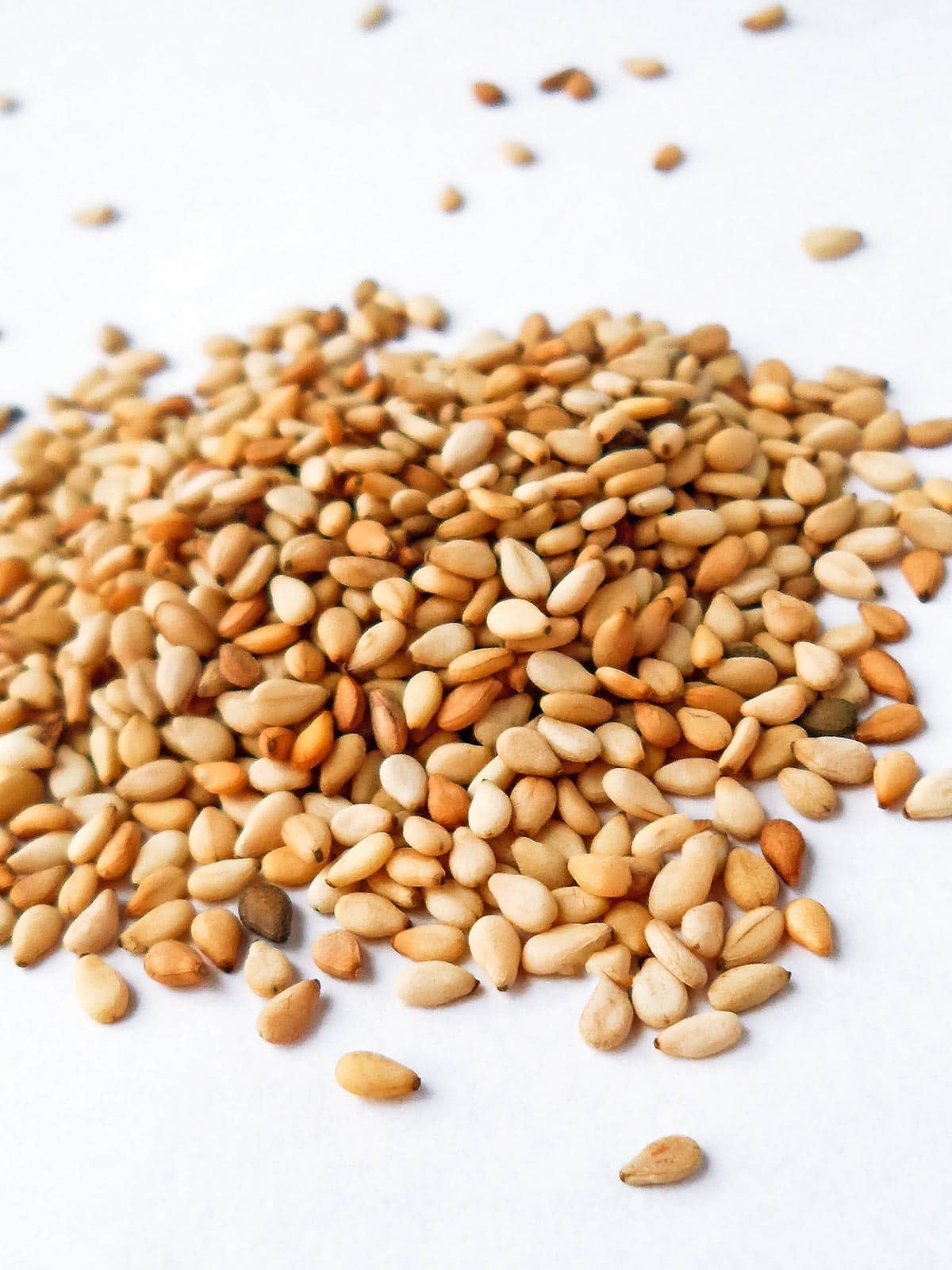
Can I Make Tahini Without a Food Processor?
Yes, you can! If you don't have a food processor, you could use a blender instead. Simply add the toasted sesame seeds and oil to the blender, and blend as you normally would. If necessary, you can drizzle in a little more oil while the blender is running to achieve a thinner sauce. This process should only take a total of 2 minutes or so to achieve. A high-speed blender like the Blendtec with twister jar or the Vitamix (with tamper) work especially well.
You could even use a mortar and pestle if you have them, but this could take a little longer. To prepare tahini sesame paste with a mortar and pestle, crush the toasted sesame seeds with the pestle until a fine powder forms. Next, gradually add the oil until the mixture forms a paste. While this could take longer than the food processor or blender methods, it should allow you more control over the final product.
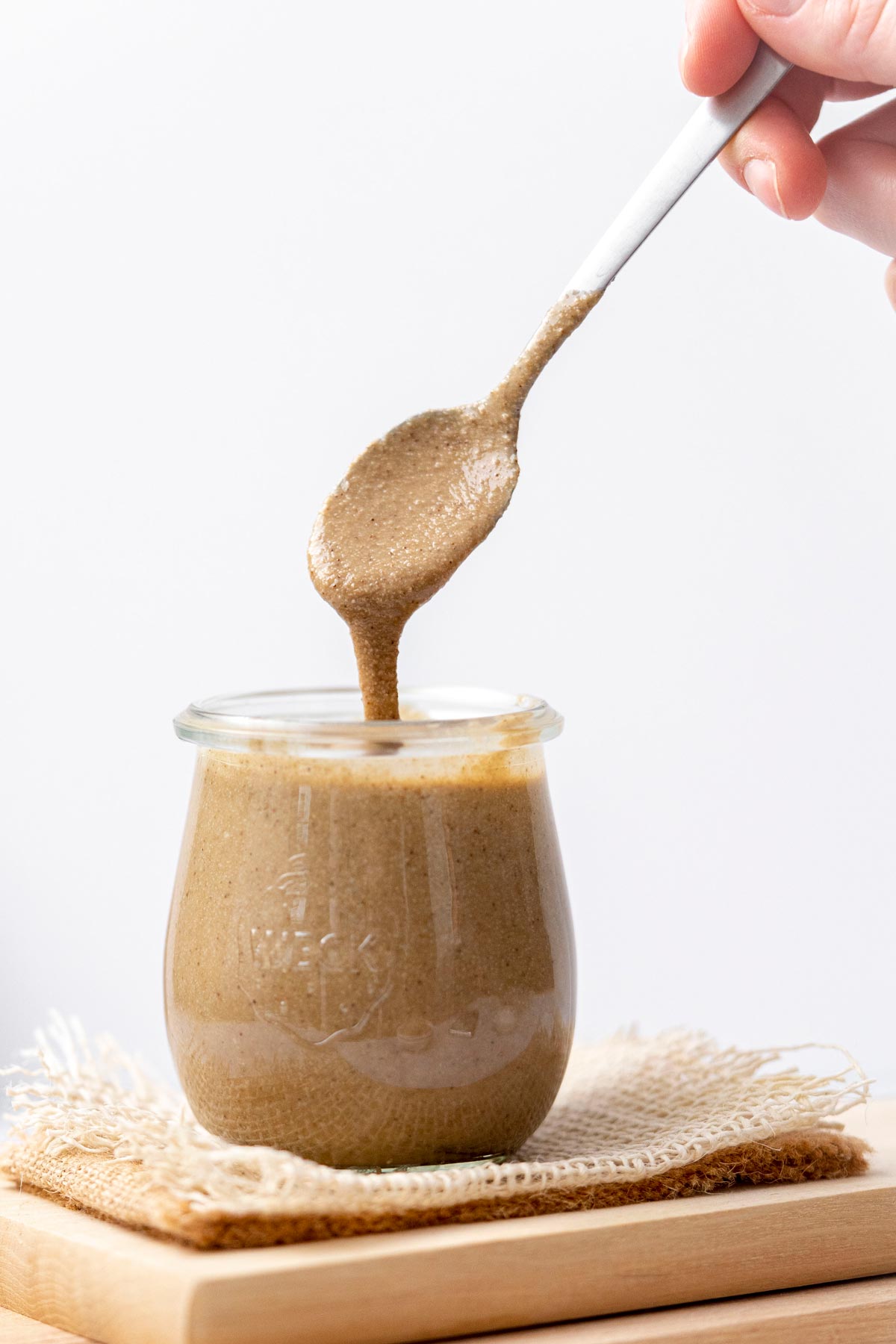
How to Use Tahini Paste
Tahini is such a versatile vegan and gluten-free ingredient in that it is suitable in both savoury and sweet recipes, as well as Middle Eastern, Asian, or North African-inspired dishes. One of the most common ways to use tahini is in a hummus dip using a mixture of chickpeas, lemon juice, garlic, and oil. Homemade hummus is excellent to enjoy as a dip for fresh-cut vegetables, toasted pita, or even potato chips. It also works well in wraps, as a pairing with falafel, or drizzled over salad as a dressing.
Another use for tahini is as a tahini sauce with some added lemon and oil. This could also work as a salad dressing or be drizzled over a salad, roasted vegetables, or a grain bowl with falafel, tomatoes, cucumbers, olives, and feta cheese. It even works as a perfect, nutty component to Asian-inspired noodles with a little soy sauce, ginger, and garlic. Baba ganoush is another popular dip recipe that also includes tahini.
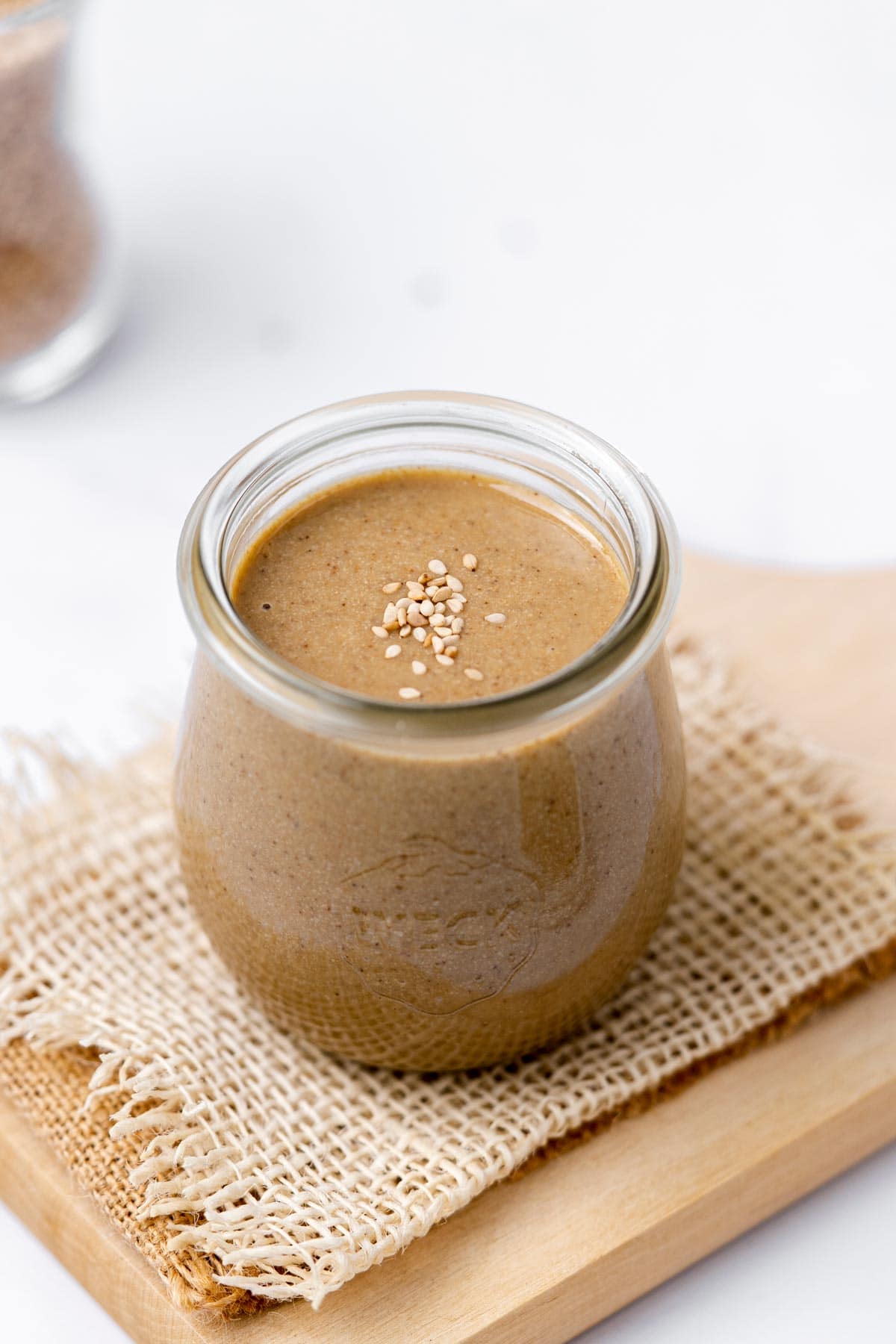
Tahini may seem like an odd pairing to desserts, but it actually makes a lot of sense when one considers other nutty ingredients for dessert like peanut butter. Tahini is wonderful in anything from cookies to halva. There is a delicious Lebanese rice pudding called Moufataka that includes tahini paste, sugar, turmeric, and pine nuts.
Original Images from 2013:
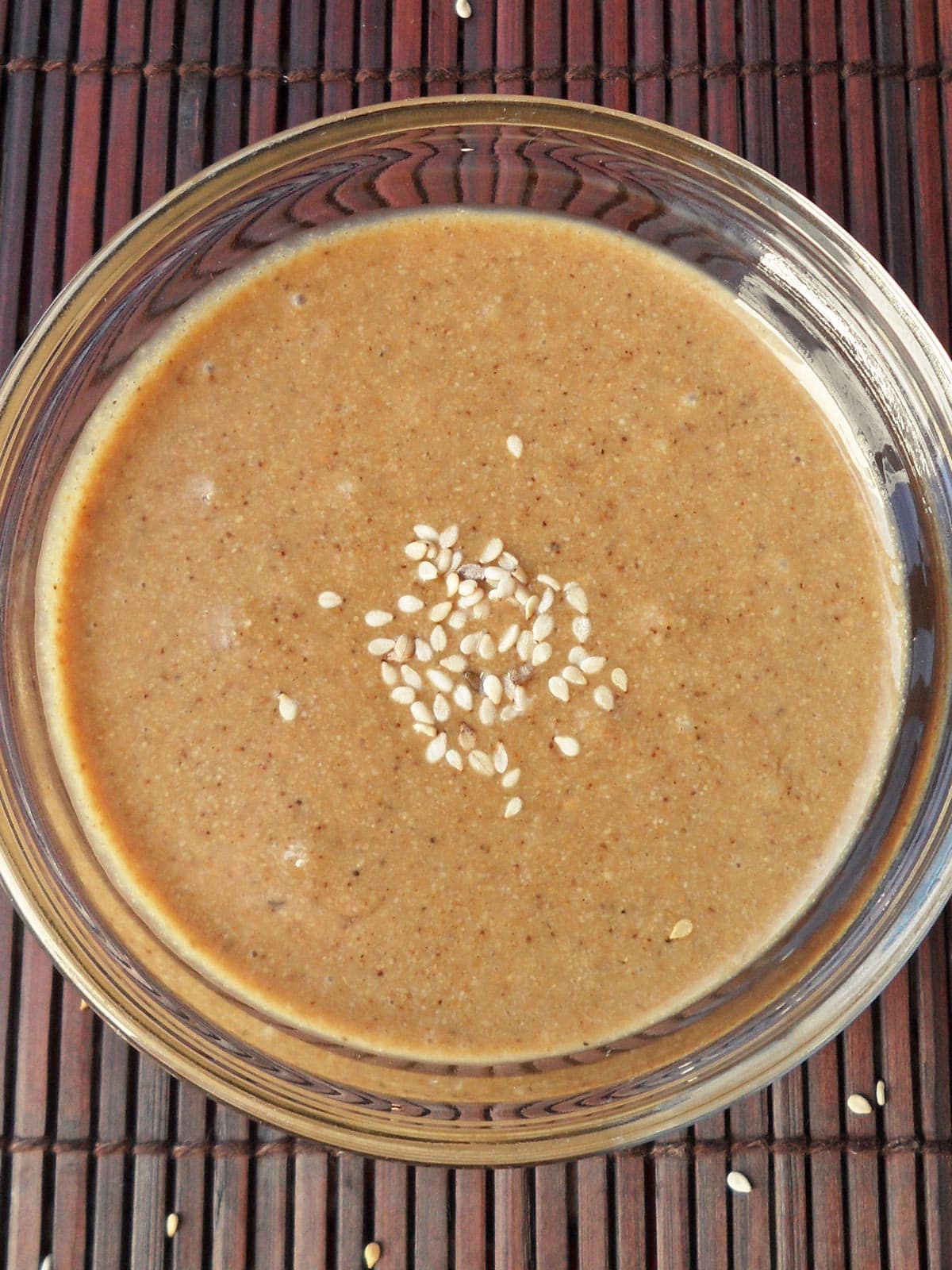

Recipes Using Tahini That You'll Love:
Recipe
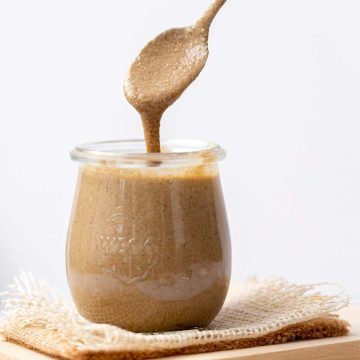
Homemade Tahini - Sesame Paste
Equipment
Ingredients
- 1 cup unhulled sesame seeds
- 2 tablespoon - ½ cup olive oil
Instructions
- Place the sesame seeds in a dry pan and toast on low heat for 10 minutes. Stir often or shake the pan and watch carefully - they don't need much color. Let the seeds cool after toasting.
- Add the cooled toasted sesame seeds and 2 tablespoons of olive oil in a food processor and process until smooth. Scrape down the sides as needed and add more olive oil for desired consistency.
- Fill the finished tahini into a jar or airtight container. Store homemade tahini in the refrigerator.
Nutrition
Pin for later?

Random Questions
Tahini sauce is made of sesame seeds and oil, typically blended into a smooth paste. Some variations include additional ingredients like lemon, garlic, or salt for flavor.
Absolutely. Making tahini at home is simple and allows you to control the ingredients. It's cost-effective, fresh, and can be customized to your taste.
Tahini is nutritious, providing healthy fats, protein, and essential minerals. It's a good source of calcium, iron, and magnesium, contributing to a balanced diet.
Almond butter, cashew butter, or sunflower seed butter can be substitutes for tahini in recipes, offering a similar creamy texture and nutty flavor.
No, they're different. Tajin is a Mexican seasoning blend with chili, lime, and salt, while tahini is a Middle Eastern paste made from sesame seeds.
The acidity in lemon juice can cause tahini to thicken due to a reaction with the proteins in the sesame seeds. This is a common occurrence in recipes.


Marion
I NORMALLY do NOT like it when people comment on a recipe without FIRST trying it. Well...I'm about about to do that VERY thing here! I JUST made some hummus from another site & did NOT have the tahini. I Searched for a recipe ( dang it , it wasn't YOURS!), it did the job as I had NEVER had hummus before but a friend gave me a bag of dried chickpeas so thought I'd try it. ANYWAY, I made it all from scratch & while I liked it, something APPEARED to be off. Not in bad way just maybe I have to twerk it to my tastes, I don't know but my son brought that Sarbo (I THINK), AFTER & I liked it. I didn't have any red pepper but plenty of garlic. I WILL try your version & get back with you. Please forgive me for NOT trying it first but it was a little funny as YOURS didn't pop up when I went in search for this. BTW, it was SUNDAY LOL.